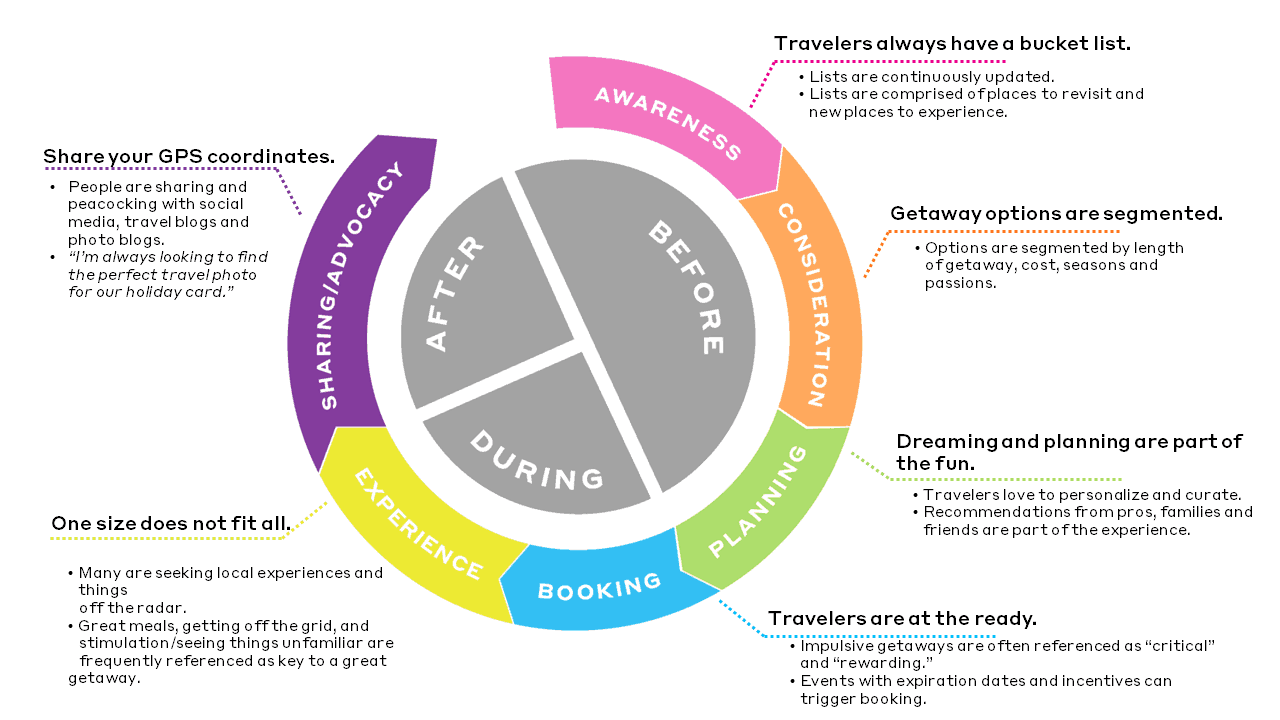When the global coronavirus crisis passes and people once again take to the roads, seas and skies, destination marketers who understand how consumers make their travel decisions—and plan accordingly—will be well-positioned to welcome them back.
Tourism destinations are challenged to attract visitors and to deliver memorable, intergenerational experiences that travelers will become advocates for. To help destination brands succeed and thrive, Mower finds primary research to be essential to understanding the target market and personalizing content for each audience.
Recently, we spent time with travelers across a variety of life stages to further refine and refresh the decision journey and to develop personas centered in travel passions and behaviors. We asked respondents to share travel photos to better understand their selection of getaway destinations and what motivates them to recommend destinations to others. These rich, first-hand conversations deepened our understanding of the decision journey and allowed us to develop actionable segmentation that informs messaging content and our development of integrated marketing communications.
Here is the multi-staged Leisure Travel Decision Journey that our market research revealed.

1. Awareness
Interests and passions come first. Getaway travelers develop short lists of nearby destinations shaped by distinct interests like outdoor recreation or culinary adventures. This insight informed our development of behavioral-based segmentation of prioritized audience personas. This segmentation allows Mower to strategically and efficiently grow brand awareness by addressing the interests, passions and backgrounds of each group.
2. Consideration
Once a traveler enters the Consideration stage, a destination can begin building a deeper relationship with that prospect. Travelers prioritize and deprioritize options by seasonal dynamics, duration of the travel window, and available budget. During this stage, a destination can promote distinct, newsworthy activities and events to help travelers envision successful outcomes.
3. Planning and Booking
Dreaming and planning are part of the anticipation and fun, and one size does not fit all. Research underscored our understanding of how much travelers value curating and personalizing their getaway experiences. At this stage, a destination brand can leverage options, knowledge, advice, and tips to help travelers customize the experience to best satisfy their personal taste and the tastes of those traveling with them. Travelers acknowledged they stand at the ready to book impulsive getaways and categorize spontaneity as “critical” and “rewarding.” This is where communicating event end dates (“Summer Concert Series ends August 29”) and offering discounts and incentives can shore up bookings.
4. Experience and Sharing/Advocacy
Every visitor is a micro-influencer and travelers are looking for branded photo opportunities to share with friends on Instagram, Facebook and every social media platform in between. This is where destinations can strategically leverage promotions that encourage sharing. A great example is Disney’s “Share Your Ears” campaign, which donated to the Make-A-Wish Foundation. Travelers wearing iconic Mickey Mouse ears shared their photos, garnering 1.7 million photos, 54 million media impressions and 420 million social media impressions.
Please contact us to learn how Mower’s Travel and Tourism specialists can leverage our thinking around the decision journey to drive success for your destination-marketing organization.
